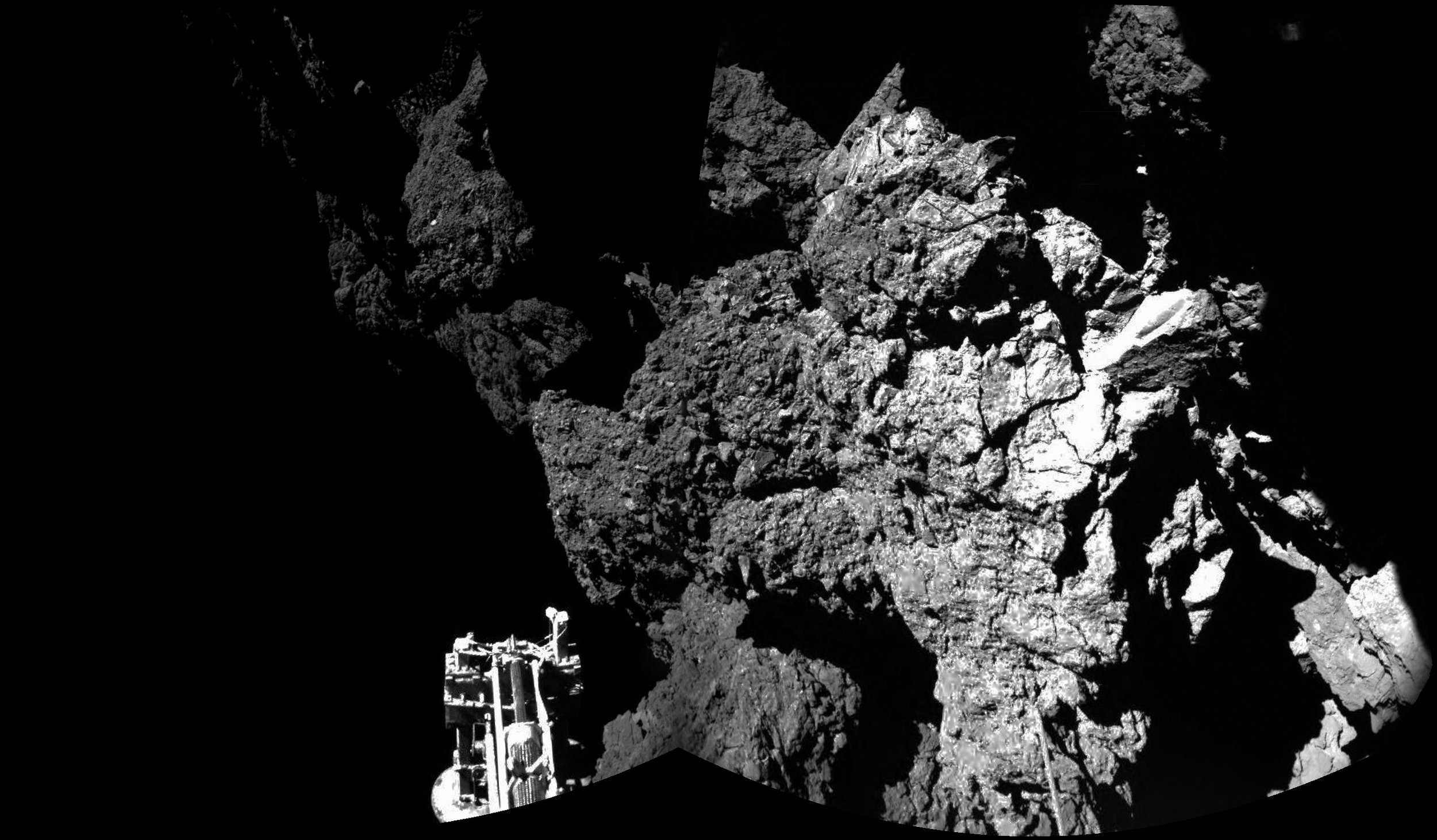 This was the view from Rosetta’s Philae lander when it came to rest upon Comet Churyumov-Gerasimenko. What is shown is one of the landers feet (bottom center) and a very craggy surface beyond. After bouncing 3-4 times, scientists assume that Philae finally came to rest set precariously upon an uneven surface. Despite these images and images taken from Rosetta orbiting above — they have yet to find exactly where the lander has settled.
This was the view from Rosetta’s Philae lander when it came to rest upon Comet Churyumov-Gerasimenko. What is shown is one of the landers feet (bottom center) and a very craggy surface beyond. After bouncing 3-4 times, scientists assume that Philae finally came to rest set precariously upon an uneven surface. Despite these images and images taken from Rosetta orbiting above — they have yet to find exactly where the lander has settled.
Shown above is the small journey Rosetta took before resting in a spot that has yet to be defined. Clearly shown are the mid-bounce images of the probe as it tumbled to its destination. Soon after these events the probe went silent due to a lack of power source: sunlight. It is thought that the probe may be covered in comet dust or simply sitting in a semi-permanently shaded spot unable to wake up.
On the bright side, even if this is all we hear from Philae — the mission is considered a successful landing as it did manage to transmit data and images from the surface. On an even brighter side… Mission specialists say that as the comet gets nearer to the sun and parts of whatever is hiding the probe melts away, could expose it’s starving solar panels and wake the probe up again renewed. Meaning that we could hear again from the small lander come this August.
